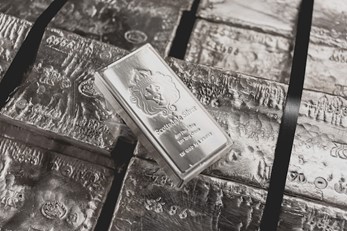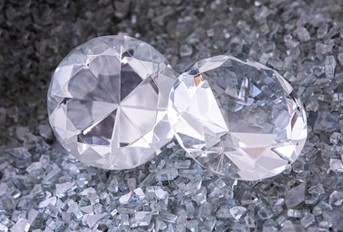Michael Shane Gibson of Lexington, Kentucky is an experienced entrepreneur, business wealth strategist, and mentor across multiple industries. In the following article, Michael S. Gibson explores the appeal of gold, silver, and diamonds as safe-haven investment assets.
Right now, all that glitters in the U.S. economy is definitely gold.
Despite inflation, interest rate increases, fears of a recession, and concerns stemming from a near-default on the national debt, gold is having a very strong investment moment.
Gold prices have spiked 10% in 2023 to nearly $2,040 an ounce, nearing the commodity's $2,075/ounce peak in August 2020 during the pandemic. Shares of stocks in gold mining companies, such as Kinross and Gold Fields are also up sharply.
In other words, gold as a safe-haven asset is projected to reach an all-time high. And while gold has long been a popular asset during tough economic times, it's not the only precious metal to consider for a safe-haven financial safety nest.
Michael Shane Gibson of Lexington, Kentucky says that during the last three years, gold's ROI has been a steady 18%. Over five years, it's 54%. Over the past 10 years, its ROI averages 41%, according to Forbes. When the dollar is weak, gold is strong. When the American stock market is shaky, investors increasingly turned to tried and true safe-haven assets to not just protect wealth but build it.
Investing in gold and other metals is also a good way to protect one's overall financial portfolio from being pounded by other investment losses. Stocks are typically more volatile than previous metals.
Michael Shane Gibson of Lexington, Kentucky says that stocks have high increases in value and sometimes even lower falls. That rarely happens when investing in gold, silver, or diamonds, making them fantastic options for those needing to spread out investments to lower risk during a turbulent economy.
Gold, silver, and diamonds are recognized and accepted worldwide and are protected against being devalued. Precious metals are used in everything from jewelry to electronics. The economic demand is always high. Part of the appeal for precious metal investors is something of a double-edged sword.
Demand increases during times of economic uncertainty, making the metals jump in value because there are always limited gold, silver, and diamond resources. That's why gold prices jumped up during six of the most recent stock market crashes during the past four decades.
One day, these precious metals will all be gone. For now, they are still extremely valuable.
 Commodities to Consider
Commodities to ConsiderSilver is used in batteries and microcircuits. Since it conducts electricity and heat, gold is commonly found in electronics and in dental tools. Automotive, beauty, medical, and audio equipment industries use diamonds.
The value of precious metals varies, however. Gold typically holds the most value and fluctuations in price are smaller compared to silver and diamonds. Much of silver's value is in its use as an industrial metal so it is impacted by changes in technologies and overall global economies.
Diamonds are also considered inflation-proof and are increasingly rare, but they are often harder to resell compared to silver and gold. Diamonds grown in labs also dilute the overall market value. On the other hand, gold cannot be artificially manufactured.
 " Read the Room
" Read the Room